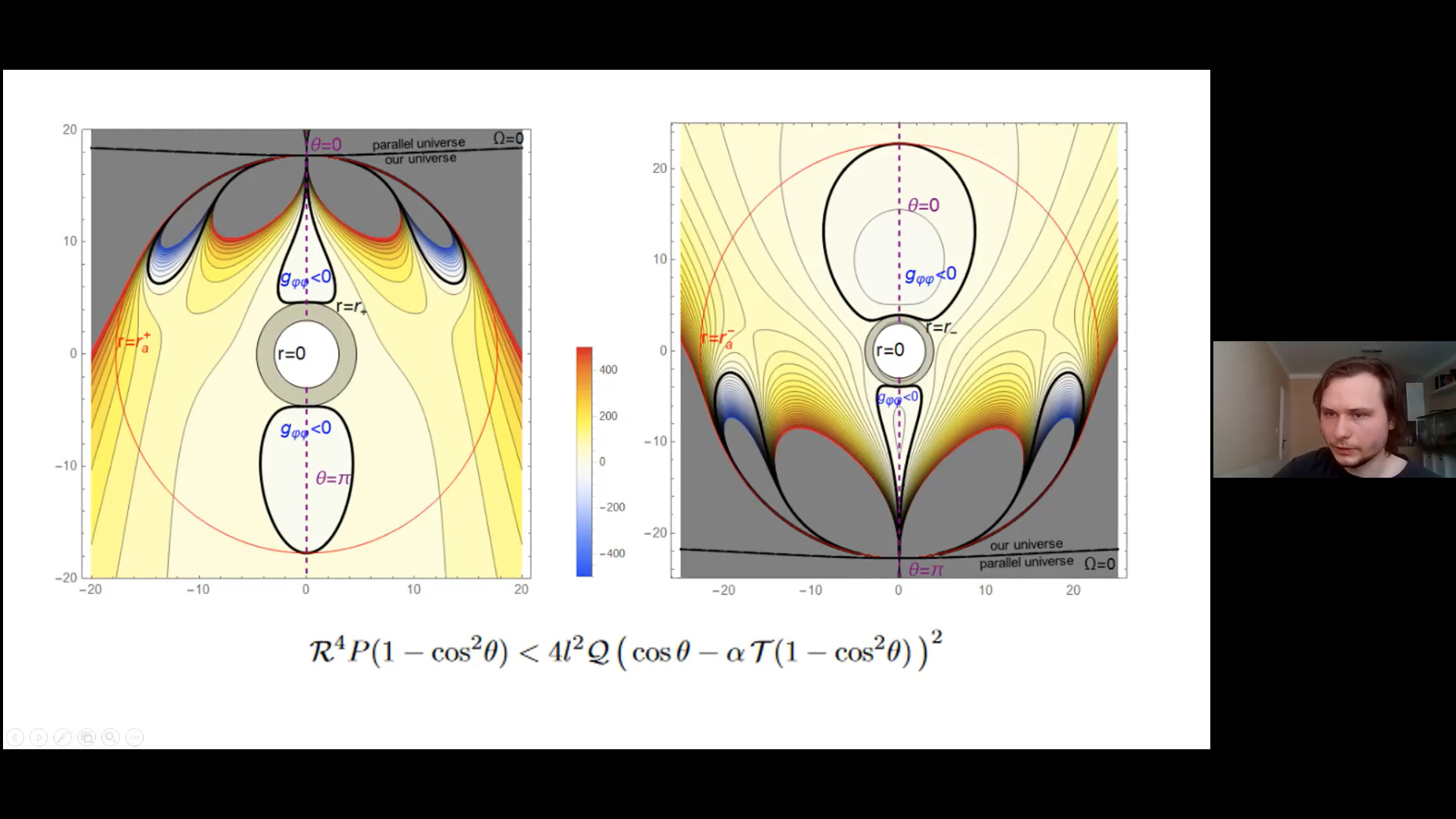- 2. února 2021
- Kinetic simulations of black-hole magnetospheres
- Mr. Benjamin Crinquand
- Institute of Planetology and Astrophysics, University of Grenoble Alps
- (seminář v angličtině)
- A variety of astrophysical phenomena can only be explained as being powered by black holes. In particular, accreting supermassive black holes are responsible for launching relativistic plasma jets and for accelerating ultra energetic particles. The mechanism that channels energy from the black hole to the particles remains a mystery. Observations have come to help lately. The Event Horizon Telescope collaboration has been able to image the shadow of the supermassive black hole M87*, suggesting that it might be spinning. The GRAVITY collaboration detected a hot spot in infrared orbiting Sgr A*, indicating the presence of a large scale poloidal magnetic field. These observations give new clues to constrain theoretical models that are able to explain jets and particle acceleration. This problem involves complex interactions between collisionless plasma dynamics in high gravitational field, and pair creation due to the interaction of energetic particles with surrounding photons from the accretion flow. Only kinetic simulations can capture all these effects. In this talk, I will present General Relativistic Radiative Particle-in-Cell (GRRPIC) simulations of an axisymmetric black hole magnetosphere, embedded in a soft background radiation field. These simulations use newly developed radiative transfer techniques. They show for the first time the development of a time-dependent electromagnetic cascade, which could explain the high variability of high-energy emission from Sgr A* and M87*, and plasma loading at the base of relativistic jets. I also show how these simulations can be used to synthesize observables (lightcurves, images), bridging the gap between theory and observations.
Záznam:
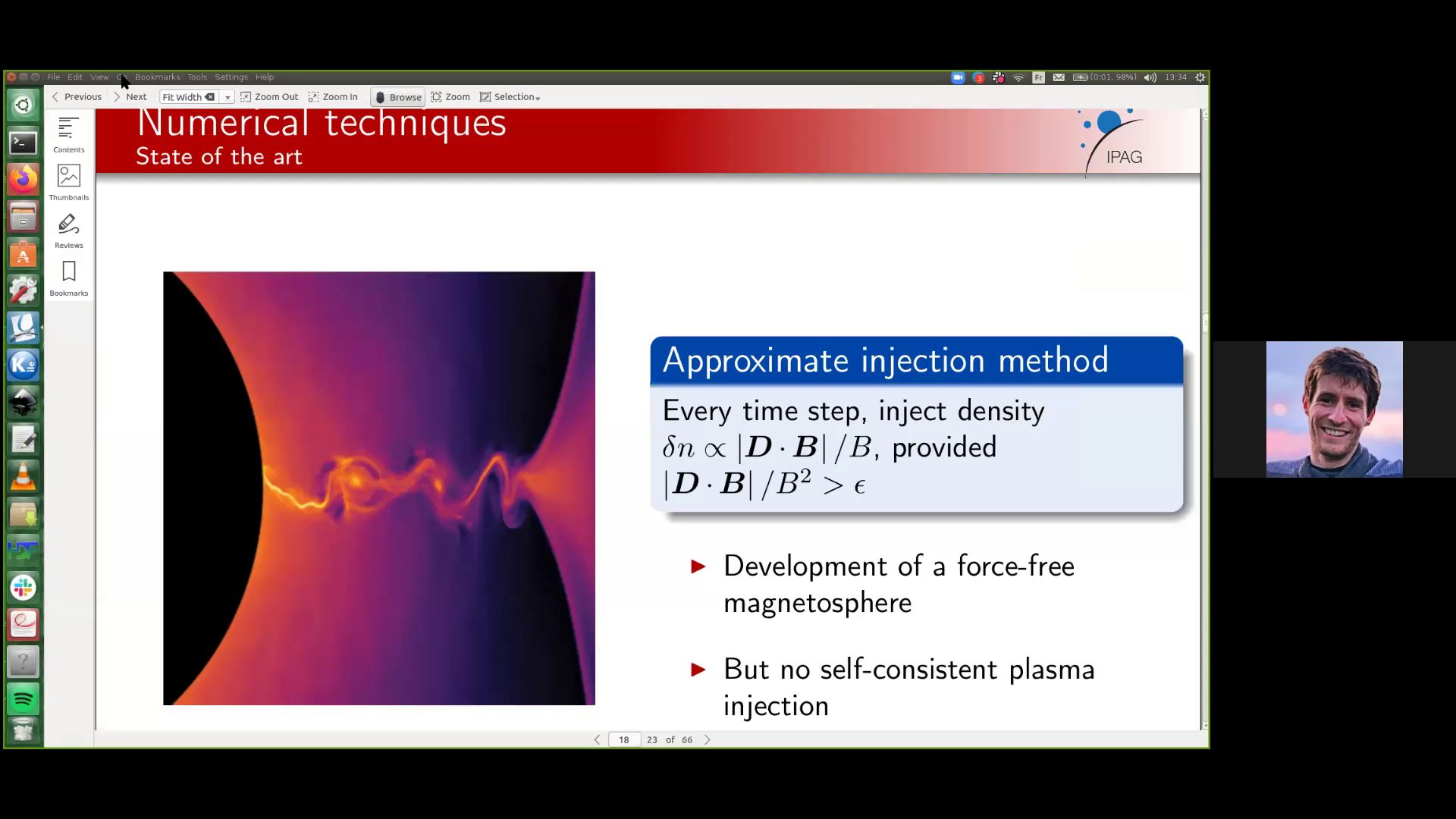
- 17. února 2021
- STŘEDA 13:10
- The role of interaction stellar winds feeding Sagittarius A*
- Dr. Diego Nicolas Calderón Espinoza
- ÚTF
- (seminář v angličtině)
The central supermassive black hole of the Milky Way, Sgr A*, accretes at a very low rate making it a very underluminous galactic nucleus. Despite the tens of Wolf-Rayet stars present within the inner parsec supplying 1e-3 Msun/yr in stellar winds, only a negligible fraction of this material (<1e-4) ends up being accreted onto Sgr A*. The recent discovery of cold gas (~10,000 K) in its vicinity raised questions about how such material could settle in the hostile (~10 MK) environment near Sgr A*. In this work we show that the system of mass-losing stars blowing winds can naturally account for both the hot, inefficient accretion flow, as well as the formation of a cold disk-like structure. We run hydrodynamical simulations using the grid-based code RAMSES starting as early in the past as possible to observe the state of the system at the present time. Our results show that the system reaches a quasi-steady state in about ~500 yr with material being captured at a rate of ~1e-6 Msun/yr at scales of ~1e-4 pc, consistent with the observations and previous models. However, on longer timescales (>~3000 yr) the material accumulates close to the black hole in the form of a disk. Considering the duration of the Wolf-Rayet phase (100,000 yr), we conclude that this scenario has likely already happened, and could be responsible for the more active past of Sgr A*, and/or its current outflow. We argue that the hypothesis of the mass-losing stars being the main regulator of the activity of the black hole deserves further consideration.
Záznam:
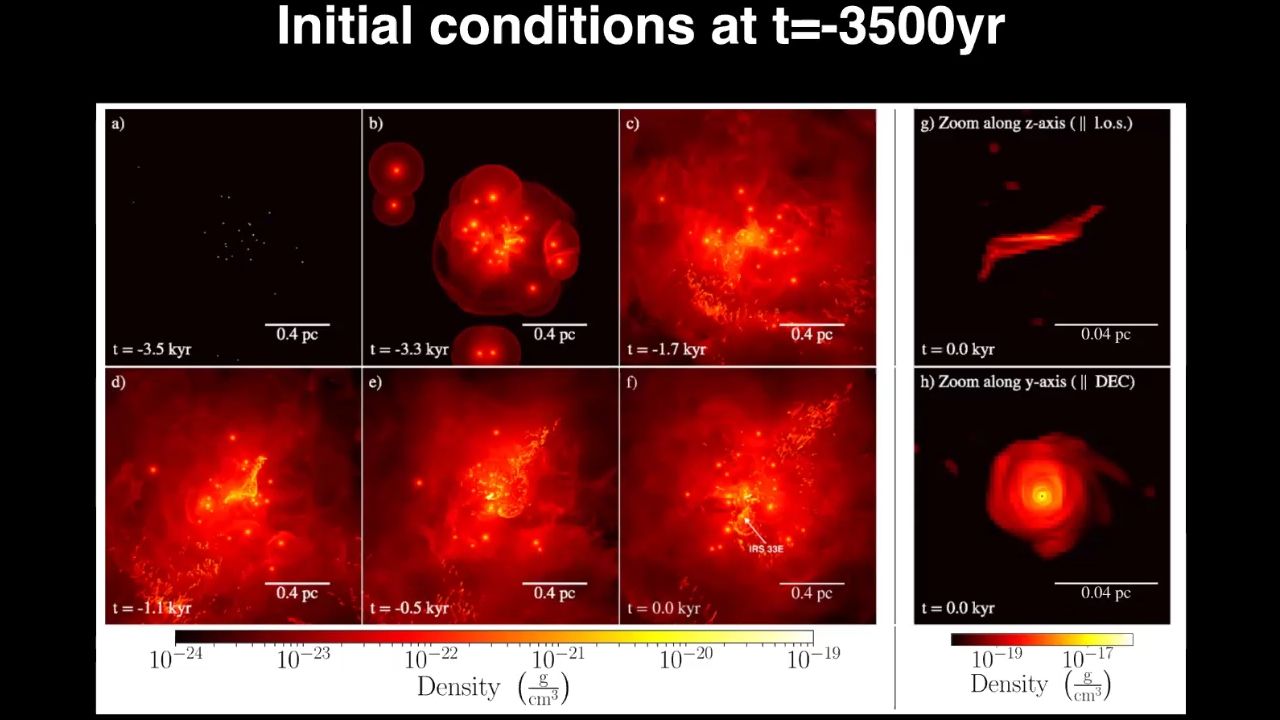
- 24. února 2021
- STŘEDA 13:10
- Mass loss law for weak gravitational fields: With or without a positive cosmological constant
- Dr. Sk Jahanur Hoque
- ÚTF
- (seminář v angličtině)
Bondi's celebrated mass loss formula measures the rate of change of energy carried away from an isolated system (in asymptotically flat space-time) by gravitational radiation. In this talk, we discuss the mass loss formula for linearized gravitational fields in covariant phase-space formalism. We also generalize this idea to the de Sitter setting. Based on arXiv:2003.09548 [gr-qc] (https://arxiv.org/abs/2003.09548).
Záznam:
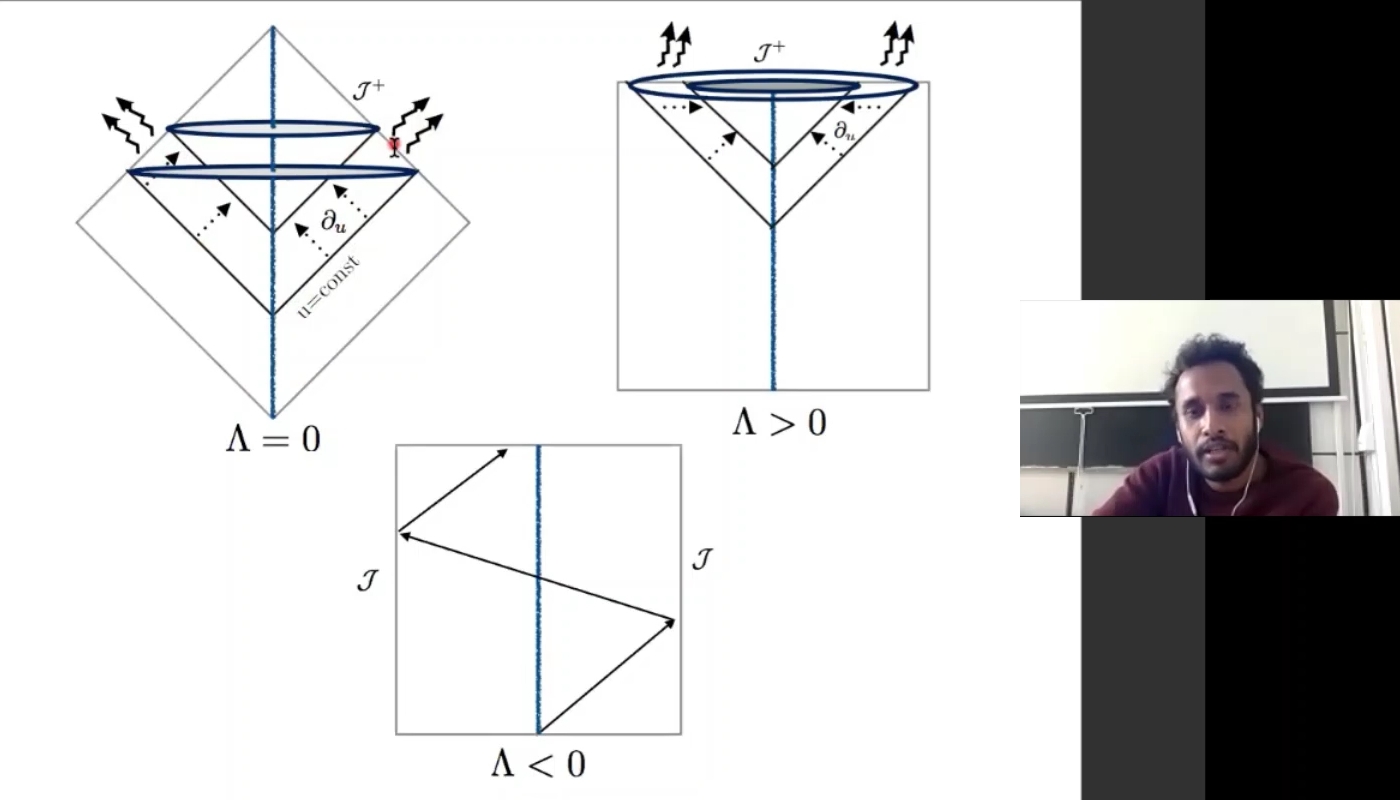
- 2. března 2021
- Speeding up in the X-shaped Galactic center S-cluster
- Dr. Michal Zajaček
- Center for Theoretical Physics, Polish Academy of Sciences, Warsaw
- (seminář v angličtině)
During the last two years, three discoveries in the Galactic center have opened up new horizons for its research. First, it is the discovery of faint fast-moving stars that reach the speed of a fraction of the light speed at their pericenters, with S62 and S4711 having orbital periods less than 10 years and S4714 potentially reaching nearly 10% of the light speed. Second, the finding that stars of the innermost stellar cluster (S cluster) form two nearly edge-on, perpendicular stellar disks, in which they rotate in both directions. Finally, the population of infrared-excess, dust-enshrouded objects hints at a very recent star-formation event potentially less than a million years ago in the vicinity of Sgr A*. Alternatively, they could be binary merger products, which points towards a complex stellar dynamics in one of the densest stellar clusters of the Milky Way. All of these findings have important implications for the Galactic Center past dynamical evolution and its star-formation history.
Záznam:
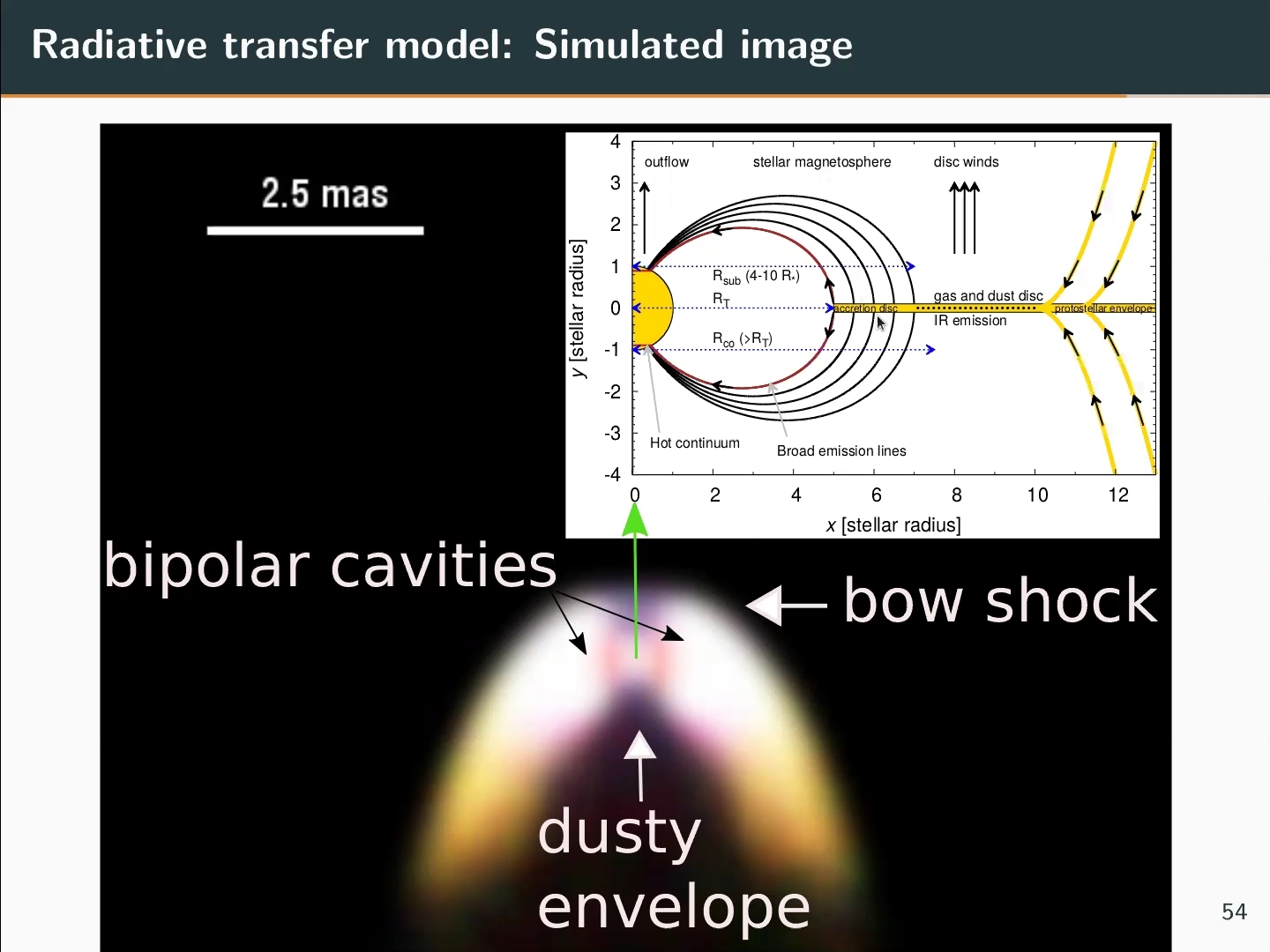
- 9. března 2021
- Black Hole Physics, Analogue Space-Times, and Electromagnetism
- Dr. Sebastian Schuster
- ÚTF already
- (seminář v angličtině)
Black hole physics has always provided a fascinating lens for phenomenology and fundamental questions alike. Personally, I always felt particularly drawn, on the one hand, to quantum field theoretic aspects of this. On the other hand, I take great pleasure in linking various physical and mathematical observations across fields—the basic idea behind the analogue space-time paradigm. In this talk, I will present our work in both of these subfields of relativity. On the side of black hole physics, particular focus will lie on how the Hawking effect is mildly misrepresented when described as black body radiation. A natural question to ask of analogue models, then, is whether this curious property is retained in the evaporation of an analogue black hole. While investigating this, we were led to an important and often overlooked distinction of how an analogue space-time analogue can be formulated. As an example for this, I will construct two very different kinds of analogues from electromagnetism in media. One of the oldest analogues turns out to be encumbered by numerous subtle and intricate issues of cartography. Although this spells trouble for use as a general relativistic analogue, I propose a way to turn this into a stepping stone towards analogues beyond general relativity.
Záznam:
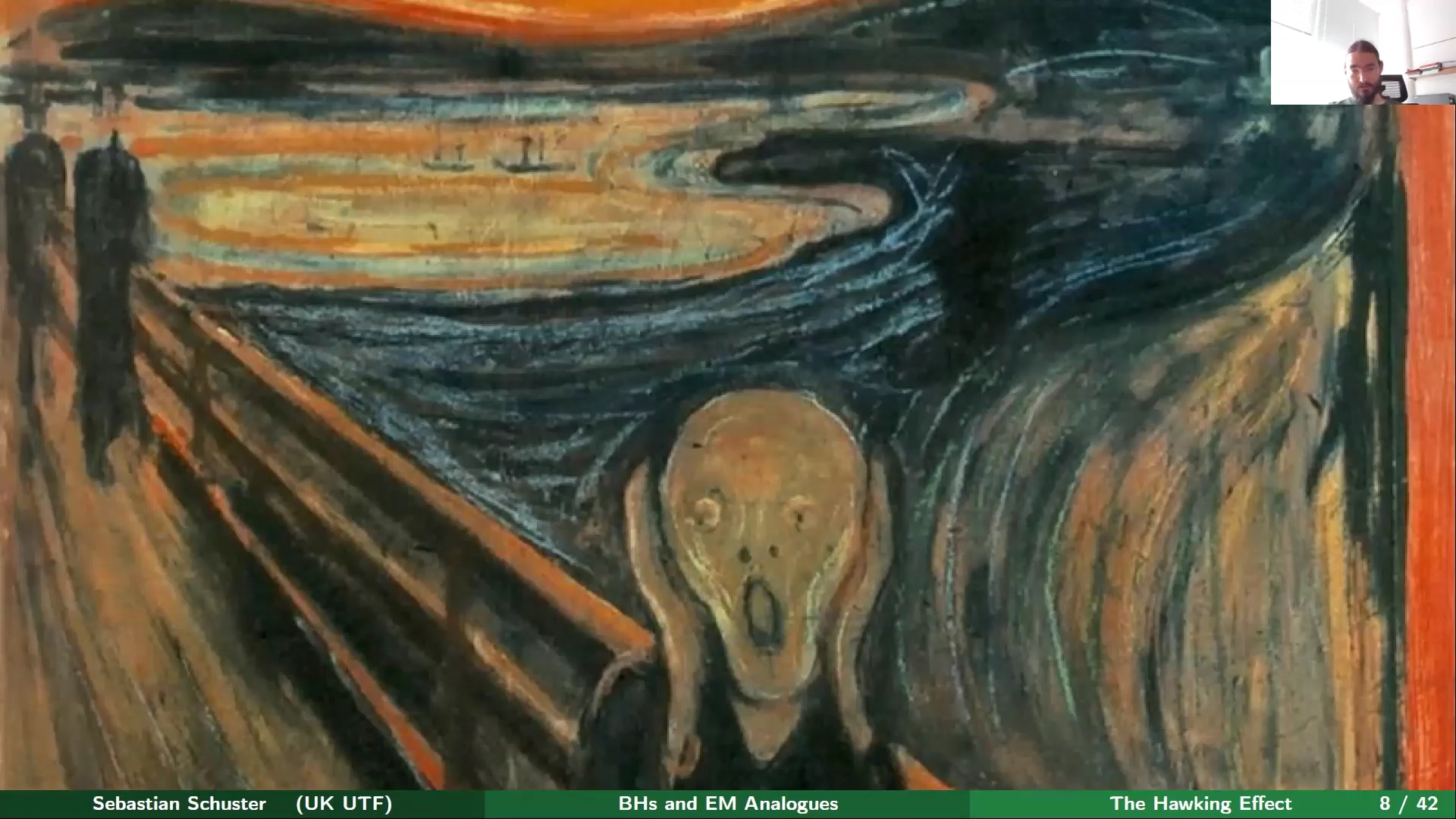

- 16. března 2021
- Losing the trace of the Einstein equation
- Mgr. Pavel Jiroušek
- Central European Institute for Cosmology and Fundamental Physics, Institute of Physics, CAS
- (seminář v angličtině)
- We show that promoting the trace part of the Einstein equations to a trivial identity results in the Newton constant being an integration constant. As a consequence, the Newton constant becomes a global dynamical degree of freedom, which is subjected to quantization and quantum fluctuations. We investigate various equivalent forms of this modification and how they can be realized on the level of action principle. Surprisingly we find that one class of these realization also provide the Planck constant as an integration constant in a similar manner.
Záznam:
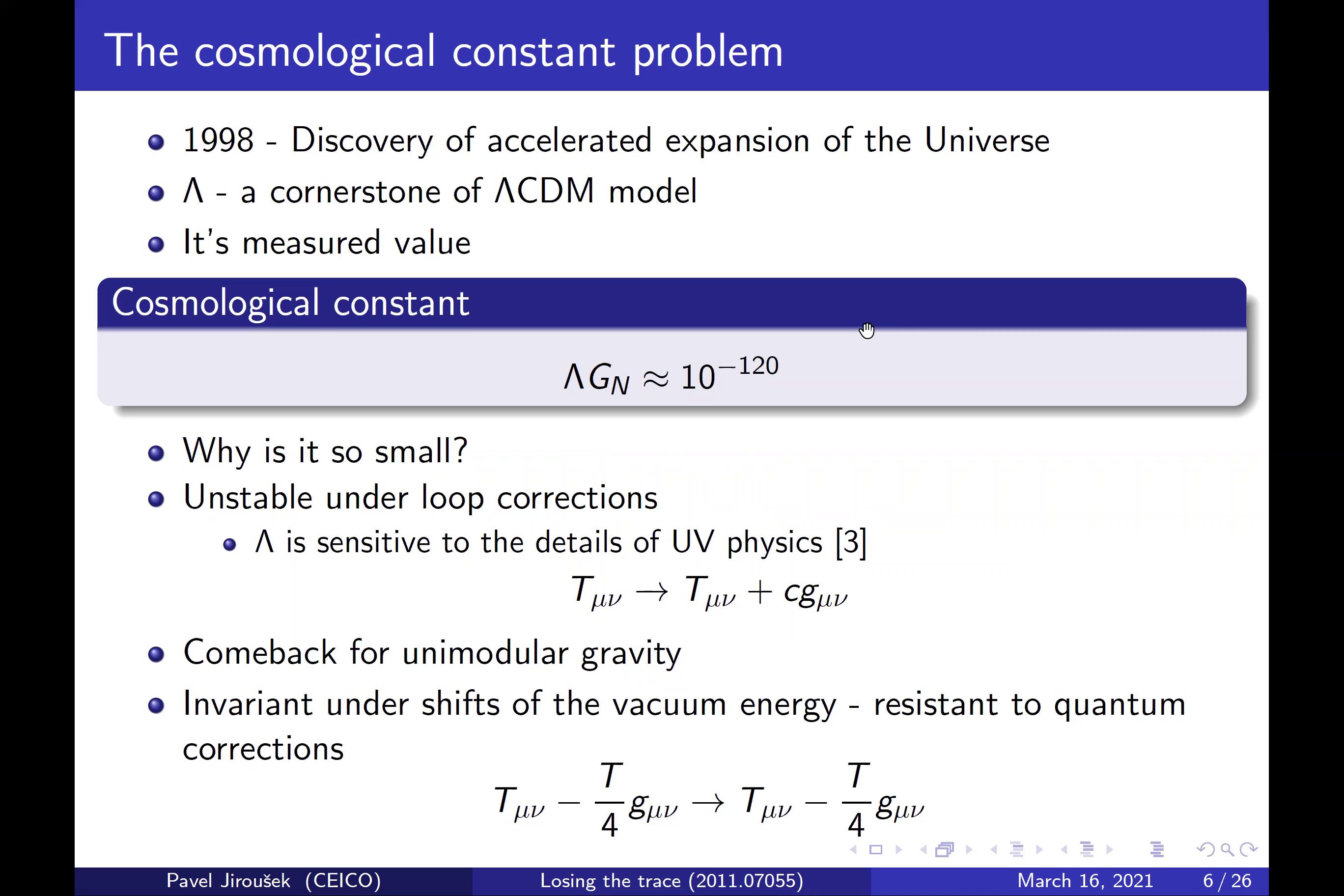
- 23. března 2021
- Relativistic-jet formation in active galactic nuclei and gamma-ray bursts
- Dr. Noémie Globus
- ELI Beamlines, Institute of Physics, CAS / Flatiron Institute, New York
- (seminář v angličtině)
- I will discuss jet formation around Kerr black holes, with a focus on gamma-ray bursts (GRB) and active galactic nuclei (AGN) jets. For GRBs, two competing jet formation mechanisms have been widely discussed in the literature; magnetic extraction of the spin down power of a Kerr black hole (Blandford-Znajek process), and outflow formation via neutrino annihilation above the horizon. Models of BZ jets usually invoke the force-free limit and ignore plasma loading of magnetic field lines, whereas models of jets driven by neutrino annihilation are usually constructed within the pure hydrodynamic limit. In GRBs, however, both processes might be at work and I will show the interplay between them. For AGNs, I will discuss jet formation and collimation in M87 in light of the recent Event Horizon Telescope observations.
Záznam:
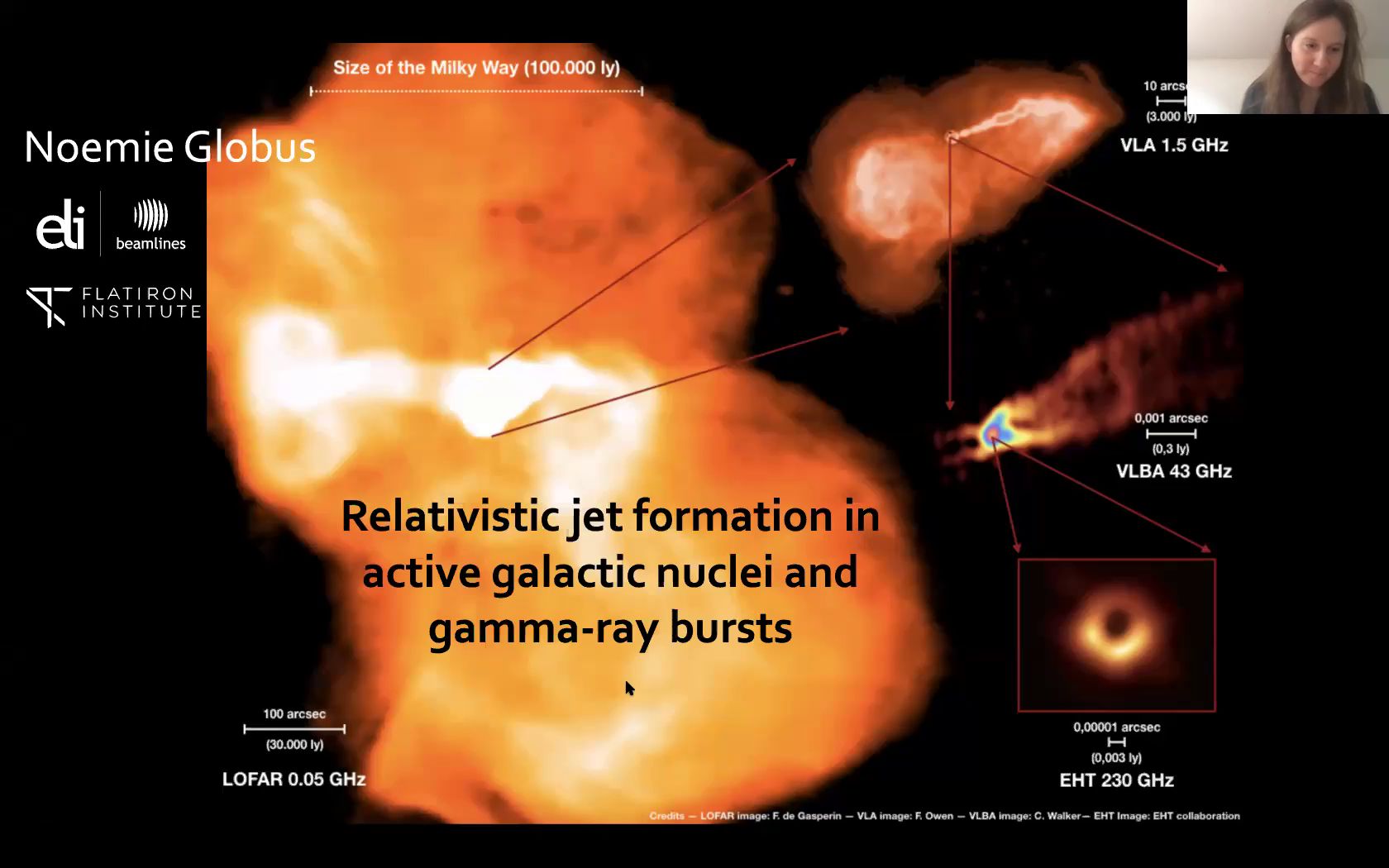
- 30. března 2021
- Observing primordial magnetic fields through Dark Matter
- Dr. Alexander Vikman, Dr. Sabir Ramazanov
- CEICO, Institute of Physica, Academy
- (seminář v angličtině)
- Primordial magnetic fields are often thought to be the early Universe seeds that have bloomed into what we observe today as galactic and extra-galactic magnetic fields. Owing to their minuscule strength, primordial magnetic fields are very hard to detect in cosmological and astrophysical observations. We show how this changes if a part of neutral Dark Matter has a magnetic susceptibility. In this way, by studying Dark Matter one can obtain information about the properties of primordial magnetic fields, even if the latter have a comoving amplitude B0<0.01 nG. In our model Dark Matter is a stable singlet scalar chi which interacts with electromagnetism through the Rayleigh operator as (χ2 F2/Λ2). For primordial magnetic fields present in the early Universe this operator forces the Z2-symmetry of the model to be spontaneously broken. Later, when the primordial magnetic field redshifts below a critical value, the symmetry is restored through an "inverse phase transition". At that point the field chi begins to oscillate and acts as a "magnetomorphic" Dark Matter component, inheriting the properties of the primordial magnetic field space distribution. In particular, for a nearly flat spectrum of magnetic field fluctuations, the scalar chi carries a statistically anisotropic isocurvature mode. We discuss the parameter space of the model and consider the possibility that the bulk of the Dark Matter is composed of the same particles chi produced via the freeze-in mechanism.
Záznam:
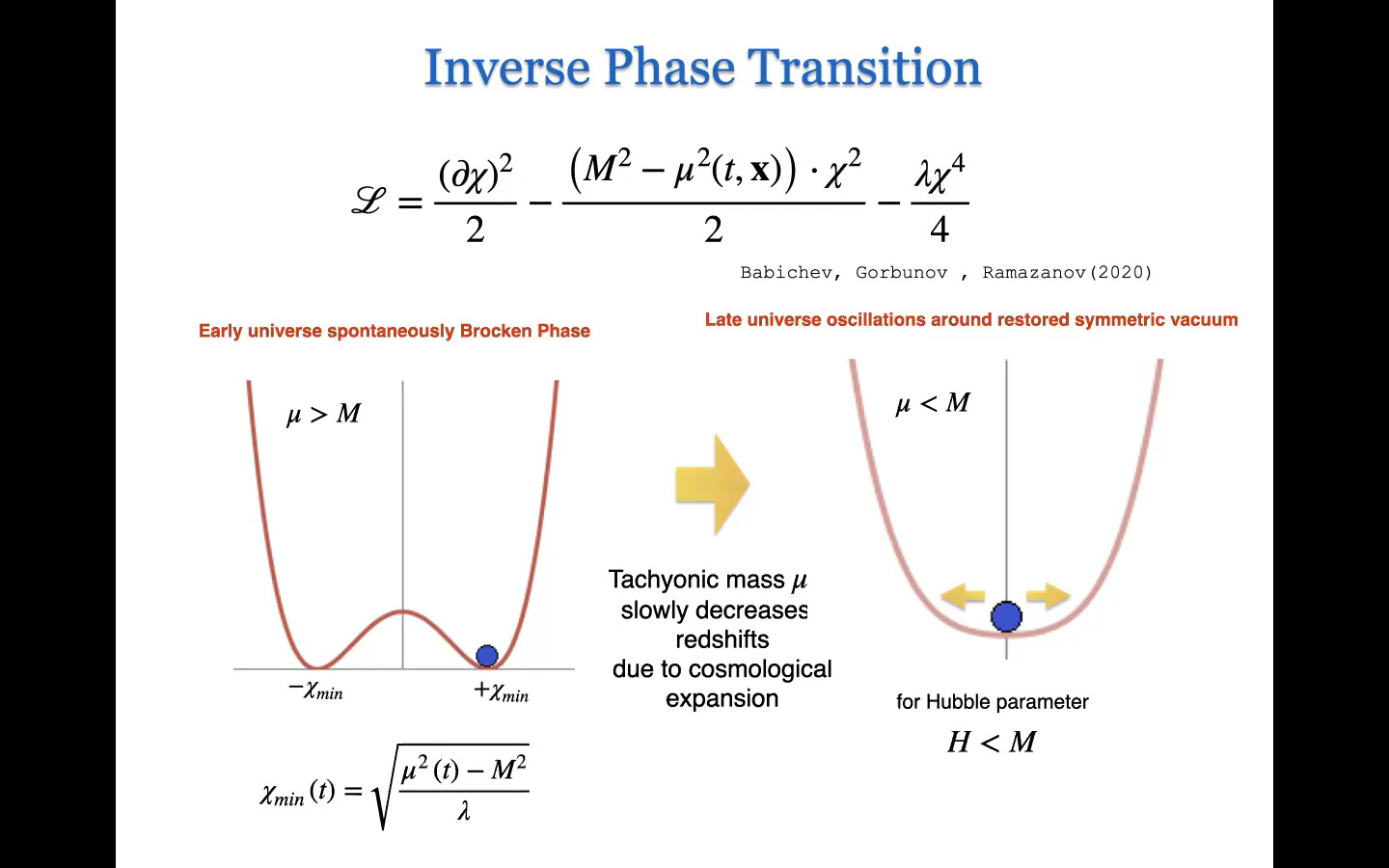
- 6. dubna 2021
- The Debye potentials in GR, and reinterpreting the Meissner effect
- Dr. David Kofroň
- ÚTF
- (seminář v angličtině)
- I will shortly summarize the famous results of Teukolsky on perturbations of type-D spacetimes. Additionally, as an important and quite useful tool, I will introduce the Debye potentials for perturbations. These potentials are introduced for vacuum, but I will try to show how to include charge/current distributions in the case of spin s=1 test fields. I will also present some new explicit solutions and will try to reinterpret the Meissner effect occurring on rotating black-hole horizons in a different fashion than usual.
Záznam:
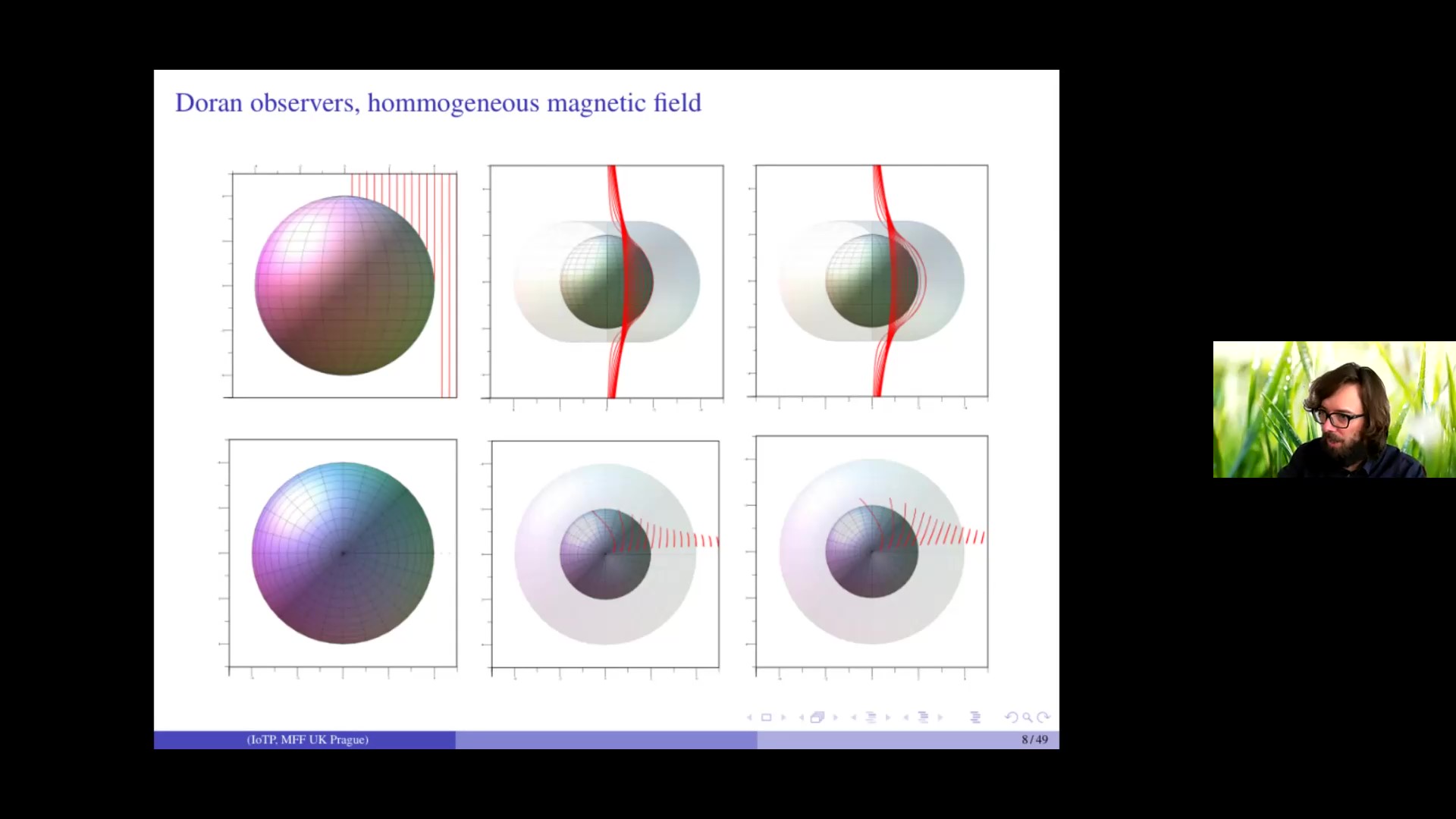
- 13. dubna 2021
- AdS black holes sourced by intrinsically non-Abelian Yang-Mills matter
- Dr. Daniel A. Flores-Alfonso
- Department of Physics, Center for Research and Advanced Studies of the National Polytechnic Institute (CINVESTAV), Mexico City
- (seminář v angličtině)
- In this talk we consider Gauss-Bonnet (GB) theory in four and five dimensions. We present a new black hole in 5D and study its thermodynamics in the framework of extended thermodynamics of Lovelock configurations. Our main interest in the 4D case is the emergence of a reentrant phase transition coming from the GB sector. In each case, the matter content is an intrinsically non-Abelian Yang-Mills field with fractional charge. As might be expected, we find that the black holes are in the van der Waals universality class.
Záznam:
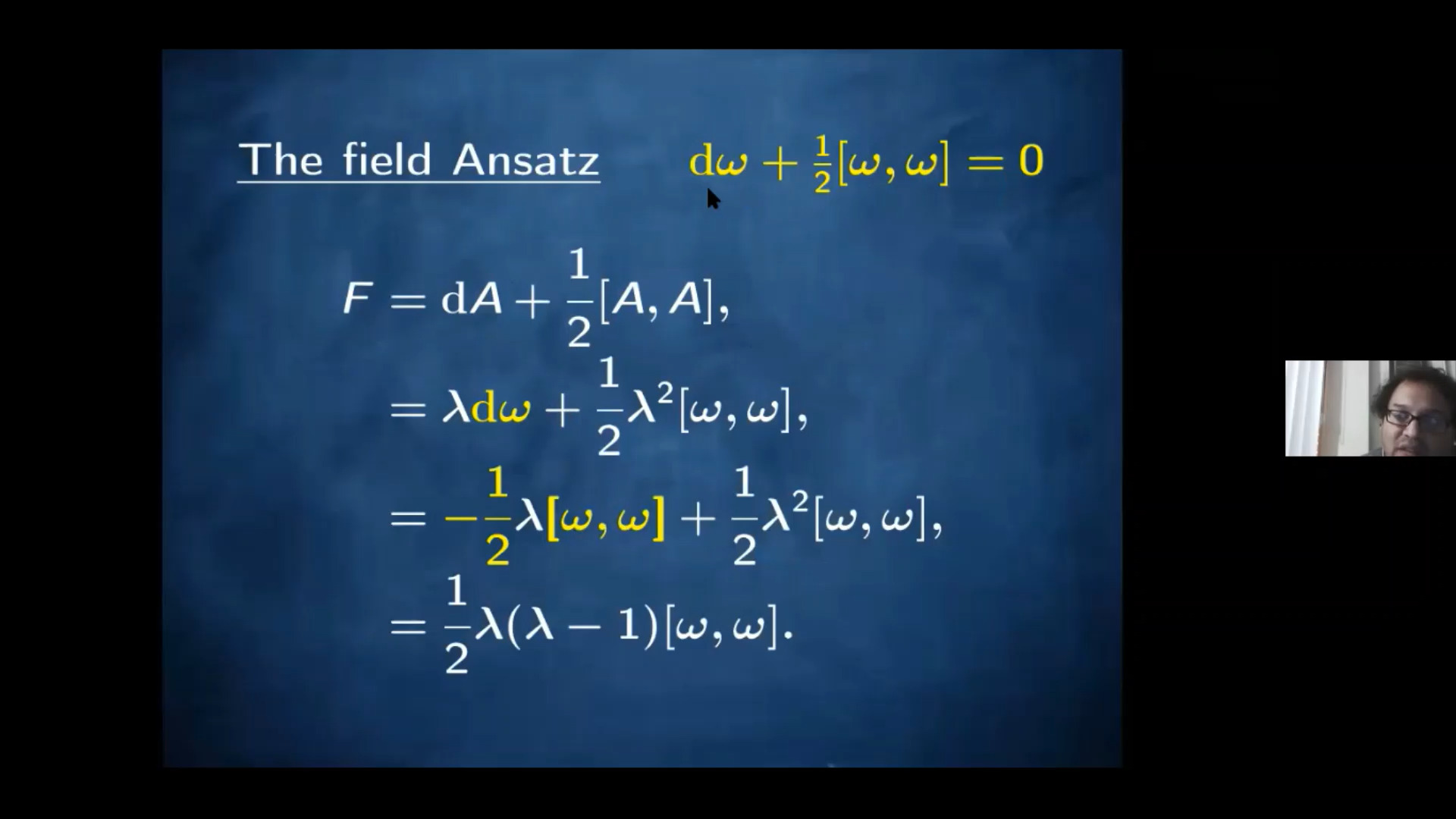
- 20. dubna 2021
- Recent developments in the treatment of the gravitational two-body problem: post-Newtonian, post-Minkowskian, self-force and effective-one-body approaches
- Dr. Donato Bini
- Istituto per le Applicazioni del Calcolo "Mauro Picone”, CNR, and INFN, Rome
- (seminář v angličtině)
- The main features of the "Tutti Frutti method" which has allowed reaching the 6PN level of accuracy (modulo a few still unknown parameters) in the relativistic treatment of the two-body system will be briefly introduced and discussed. Special attention will be devoted to the gauge-invariant information encoded in the scattering angle of hyperbolic-like encounters.
Záznam:
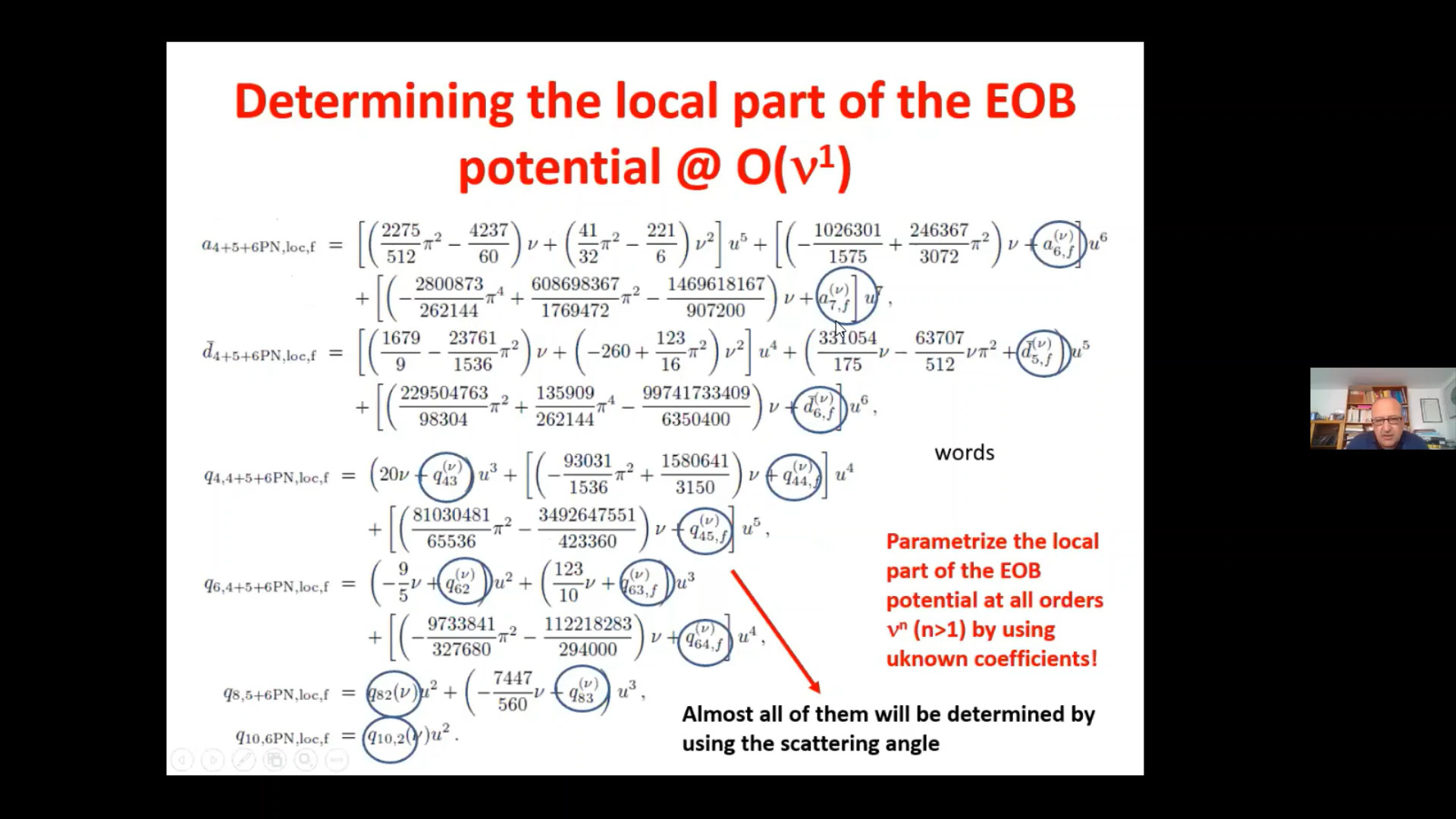
- 27. dubna 2021
- Quantum gravity phenomenology from thermodynamics of spacetime
- Mr. Marek Liška
- ÚTF
- (seminář v angličtině)
- On one hand, the formalism developed in thermodynamics of spacetime allows a derivation of Einstein equations from the proportionality of entropy to the area. On the other hand, low energy quantum gravity effects imply a modified entropy formula with an additional term logarithmic in the area. Combining both concepts, I will introduce the derivation of quantum modified gravitational dynamics from the modified entropy and discuss its main features. Moreover, I will show its physical implications on a simple cosmological model and show that it suggests the replacement of the Big Bang singularity by a regular bounce.
Záznam:
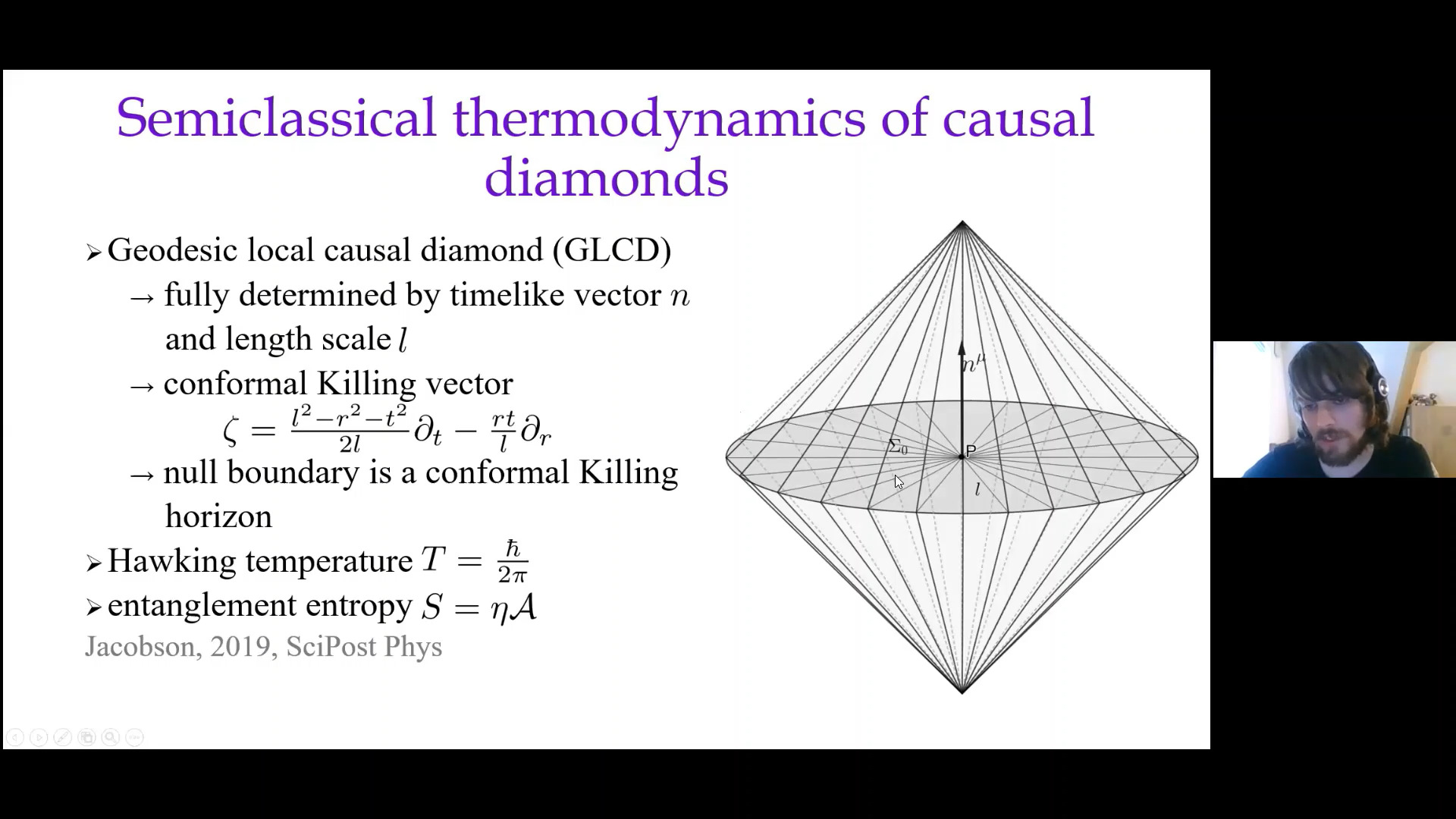
- 4. května 2021
- Cosmological tests of modified gravity models with non-zero gravitational slip: a review
- Ms. Claudia Caputo
- ÚTF
- (seminář v angličtině)
- Cosmological observations represent a powerful tool to test gravity at large scales. In particular, a possible way to do it is by introducing a couple of phenomenological functions that can be measured and which completely characterise deviations from general relativity. Their observational values can be used to constrain the parameter space of modified gravity theories and, eventually, rule out some of them. This possibility will be discussed for two classes of scalar-tensor theories, Horndeski and beyond Horndeski gravity, using the formalism of the effective field theory of dark energy. Particular emphasis will be given to the subclasses of these theories which predict a non-vanishing gravitational slip.
Záznam:
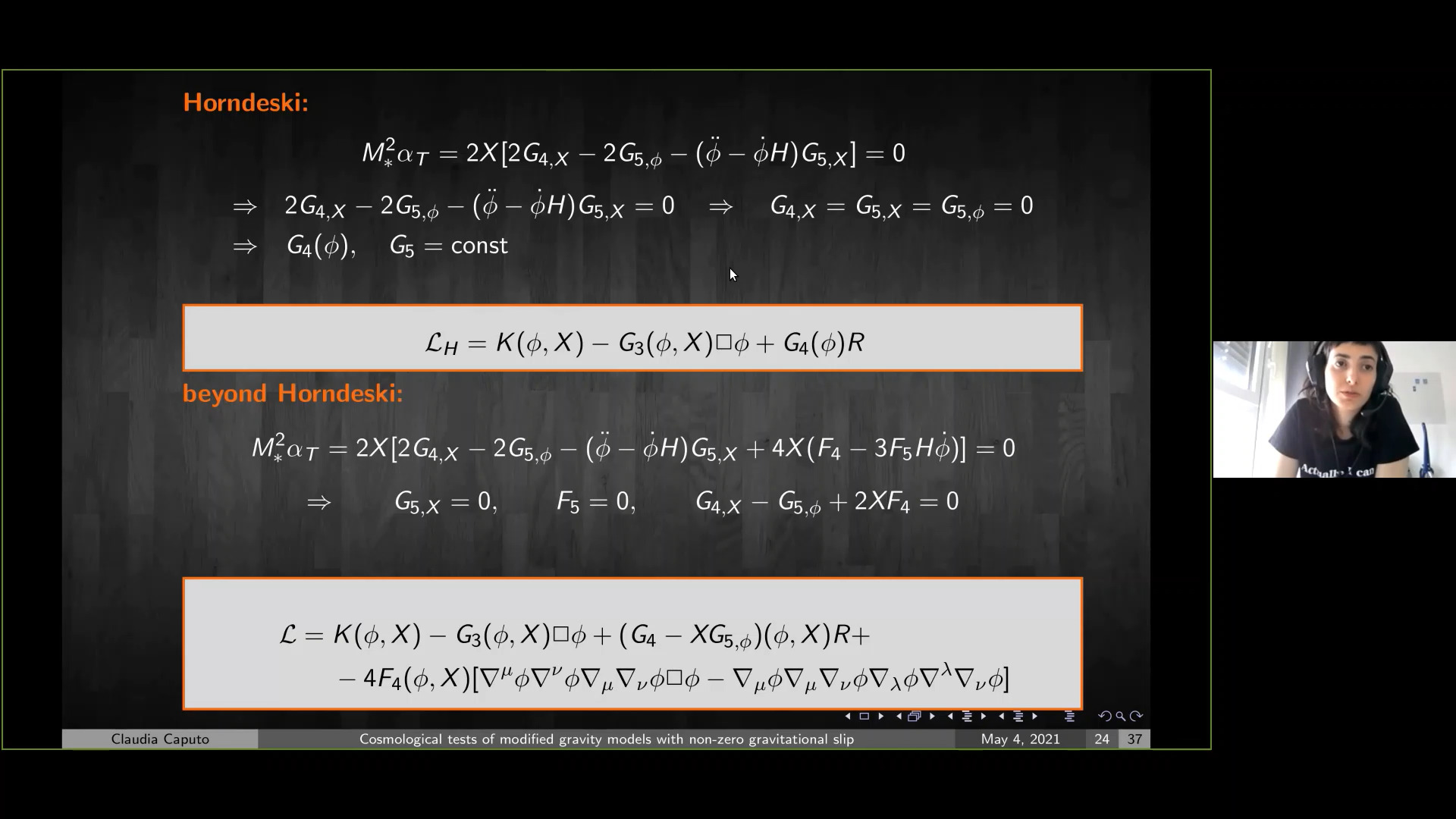
- 11. května 2021
- Spinning test body orbiting around a Kerr black hole: Eccentric equatorial orbits and their asymptotic gravitational-wave fluxes
- Mr. Viktor Skoupý
- MFF & Astronomický ústav AV ČR
- (seminář v angličtině)
- We use the frequency and time domain Teukolsky formalism to calculate gravitational-wave fluxes from a spinning body on a bound eccentric equatorial orbit around a Kerr black hole. Using Mathisson-Papapetrou-Dixon equations we are not only able to find the equatorial trajectory of a spinning particle in terms of its constants of motion, but also to provide a method to calculate the azimuthal and the radial frequency of this trajectory. Using these orbital quantities, we introduce the machinery to calculate through the frequency domain Teukolsky formalism the energy and the angular momentum fluxes at infinity, and at the horizon, along with the gravitational strain at infinity.
Záznam:
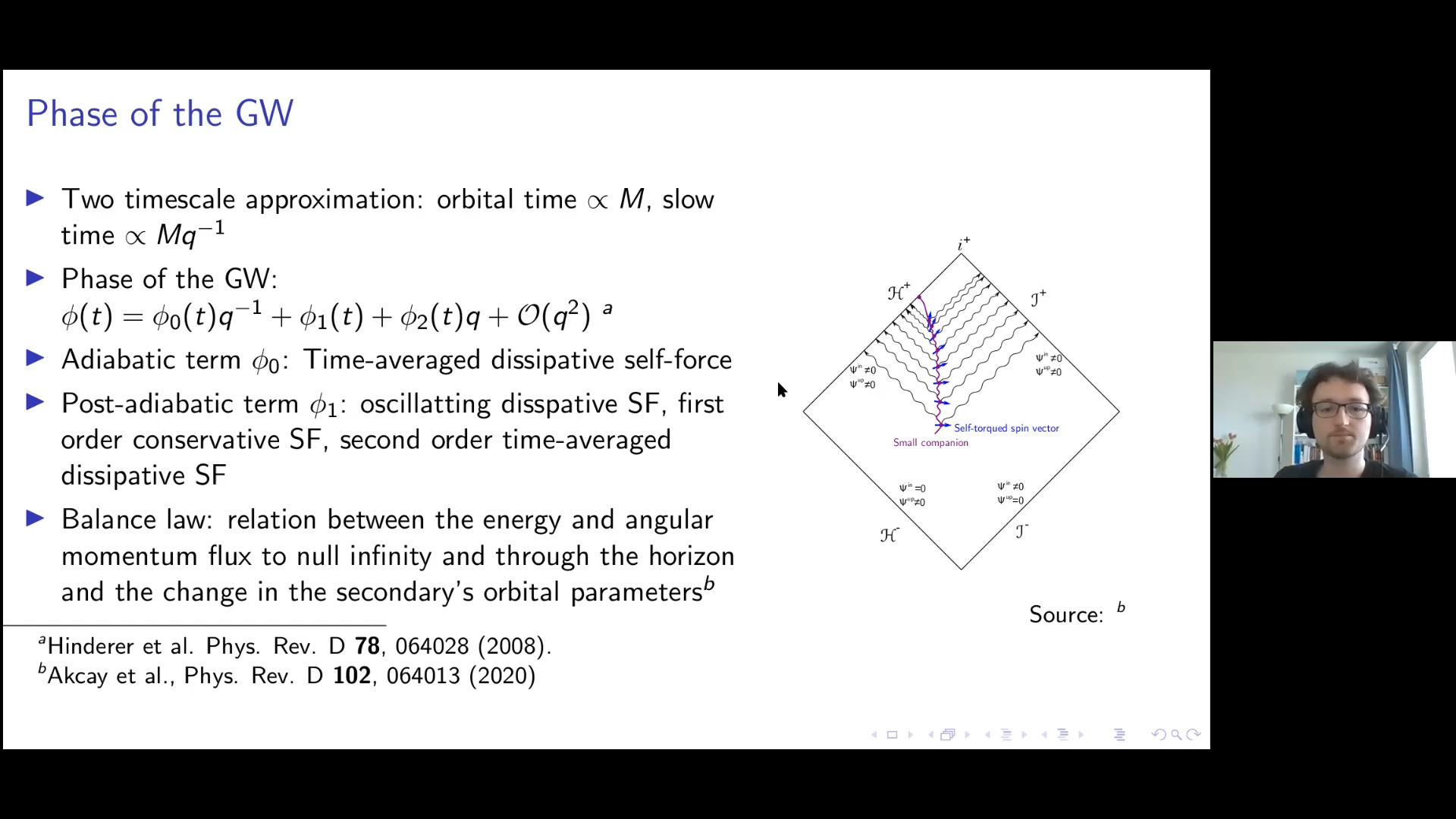
- 18. května 2021
- Shell shall not stop me! Unruh-DeWitt detection of spacetime features
- Ms. Wan Cong
- Perimeter Institute for Theoretical Physics, Waterloo, Ontario
- (seminář v angličtině)
The Unruh-DeWitt (UDW) detector was introduced originally to give an operational meaning to particle detection in curved spacetimes. This simple two level quantum system interacts with the quantum field through a monopole type coupling, possibly exciting it to the excited state in the process. As the vacuum state of the field depends on global features of the background spacetime, the transition probability of a detector may be able to pick up these features too. As a result, UDW can be better-than-classical-detectors. Specifically, we shall see that UDW detectors are able to detect the presence and rotation of a massive spherical shell enclosing them even though the spacetime inside the shell is Minkowskian. Moreover in the case of a cylindrical shell, both the interior and exterior spacetimes are locally flat, but there is a conical deficit present outside the shell. This can also be detected by detectors placed in the shell.
Záznam:

- 25. května 2021
- Quantum imprints of gravitational shockwaves
- Dr. David Kubizňák
- Perimeter Institute for Theoretical Physics, Waterloo, Ontario
- (seminář v angličtině)
Gravitational shockwaves are simple exact solutions of Einstein equations representing the fields of ultrarelativistic sources and idealized gravitational waves (shocks). Historically studied abundantly in the context of possible black hole formation in high energy particle collisions, they are at the forefront of research even today. Representing hard modes in the bulk, shocks give rise to the gravitational memory effect at the classical level and implant supertranslation (BMS) hair onto a classical spacetime at the quantum level. The aim of this paper is to further our understanding of the ‘information content’ of such supertranslations. Namely, we show that (contrary to the several claims in the literature) a gravitational shockwave does leave a quantum imprint on the vacuum state of a test quantum field and that this imprint is accessible to local observers carrying Unruh-DeWitt (UDW) detectors in this spacetime.
Záznam:
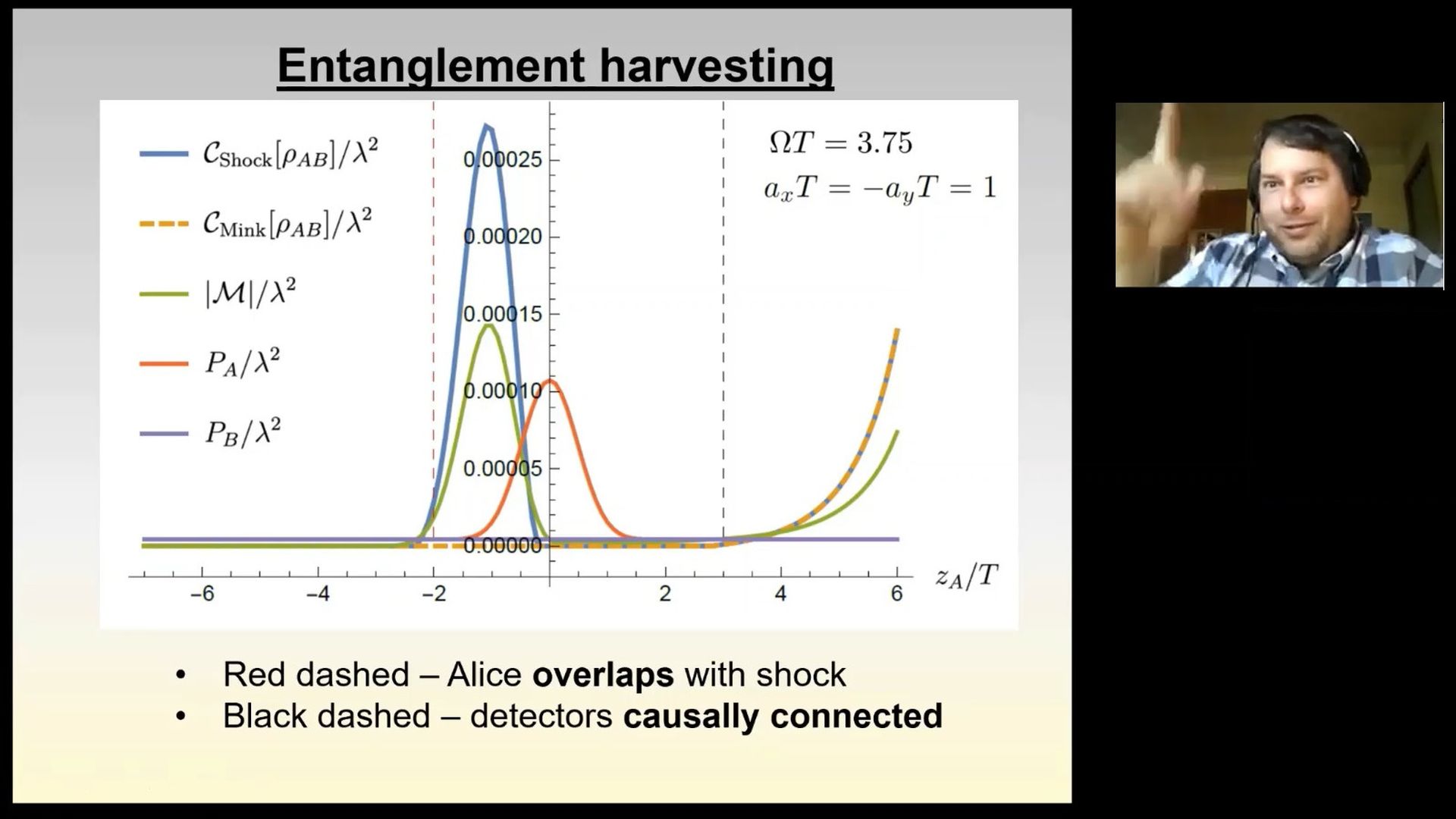
- 1. června 2021
- Accelerating Taub-NUT black hole
- Mr. Adam Vrátný
- ÚTF
- (seminář v angličtině)
An exact solution of Einstein's equations will be described which represents an accelerating black hole with a NUT parameter. The solution was found by Chng, Mann and Stelea in 2006. A new convenient form of this metric will be presented, together with its algebraic, geometric and physical properties.
Záznam:
